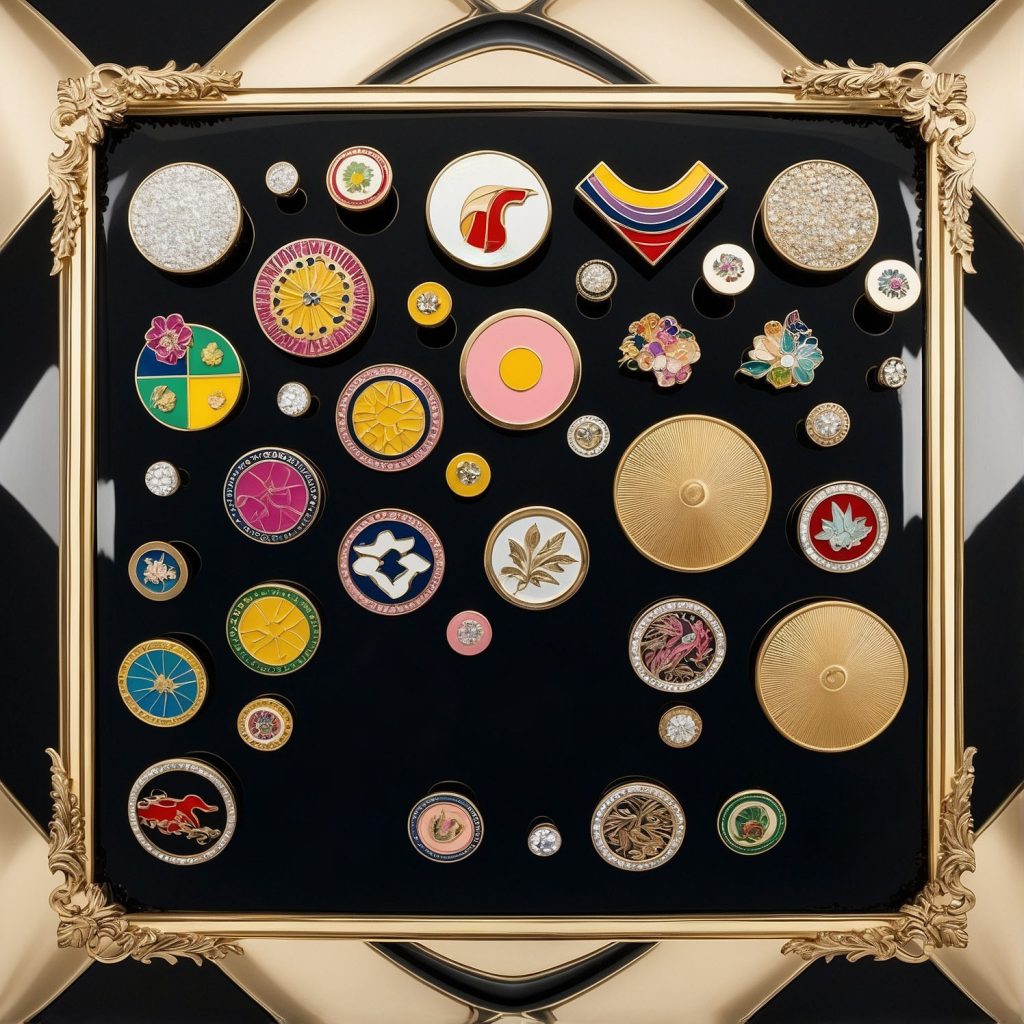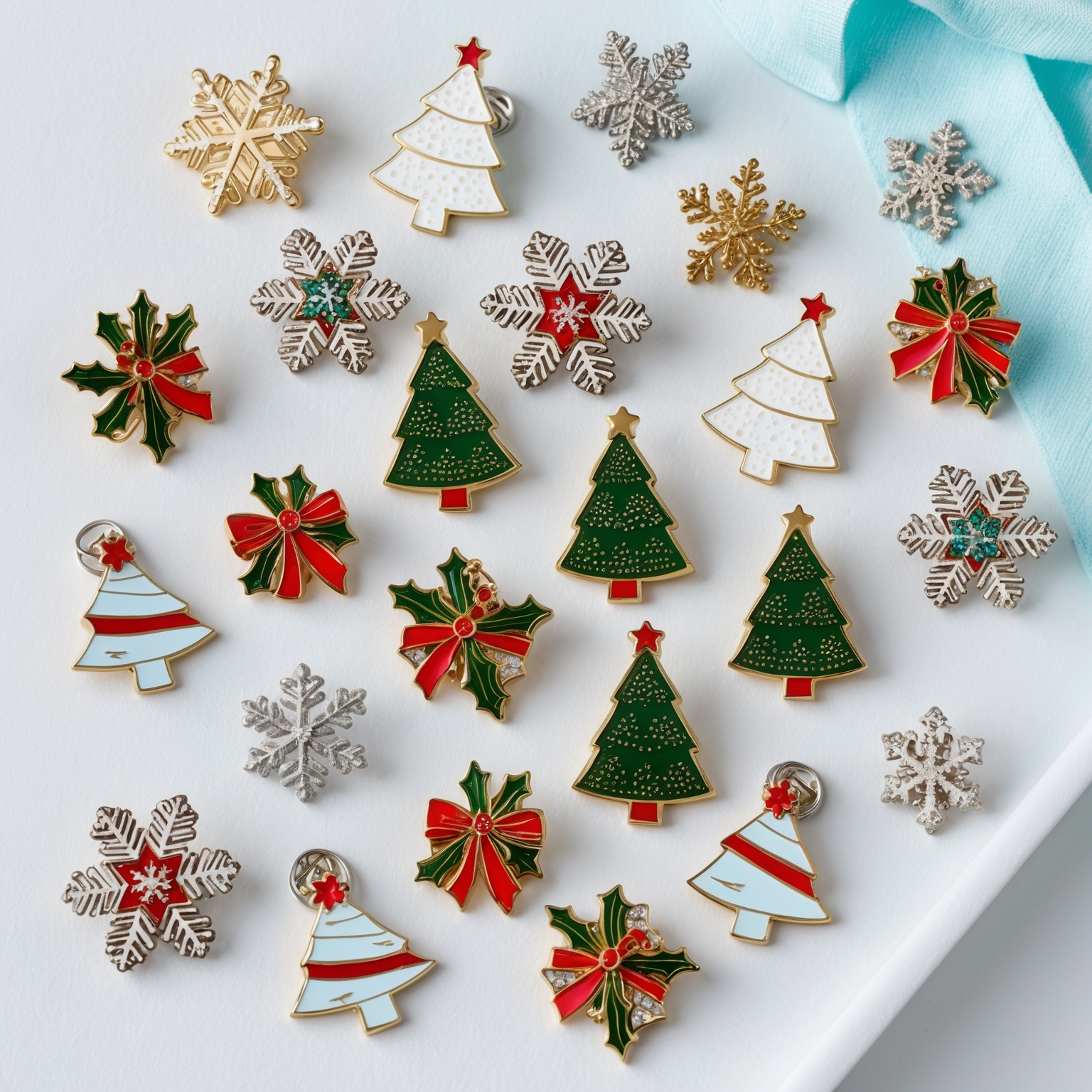Trading pins have long held a special place in the hearts of collectors, fans, and enthusiasts alike. From sports tournaments to Disney parks, Olympic Games to corporate events, trading pins have evolved into coveted collectibles that capture memories, symbolize achievements, and celebrate milestones. The excitement of pin trading has grown into a global phenomenon, with collectors seeking out rare and valuable pins to add to their collections.
For both novice and seasoned collectors, understanding the factors that contribute to a trading pin’s rarity and value is crucial to building a meaningful and valuable collection. Some pins are easy to find, while others are produced in limited quantities, making them true “collector’s gems.” In this article, we’ll explore the factors that make certain trading pins rare and desirable, as well as tips for identifying and acquiring valuable pins for your collection.
Whether you’re a casual trader or an avid collector, this guide will help you navigate the fascinating world of trading pins and uncover the hidden gems that could elevate your collection to new heights.
The History and Evolution of Trading Pins
Origins of Trading Pins
Trading pins have their roots in sports, particularly in the realm of baseball and the Olympic Games. Pin trading in baseball can be traced back to the early 20th century, when teams and fans began using pins to commemorate games and championships. These early pins were often simple in design, featuring team logos or mascots, and were worn proudly by players and supporters alike.
The tradition of pin trading reached new heights during the 1980 Winter Olympics in Lake Placid, where athletes, officials, and spectators exchanged commemorative pins to celebrate the games. Since then, pin trading has become a cornerstone of the Olympic experience, with new designs being released for every edition of the Games. The practice has since expanded beyond sports to include events such as the FIFA World Cup, Disney theme parks, and corporate conferences.
Today, trading pins are more than just souvenirs—they are collectibles with the potential to hold significant value, particularly when certain factors such as rarity, condition, and demand come into play.
Why People Collect Trading Pins
The appeal of trading pins lies in their ability to tell stories and capture moments in time. Collectors often view pins as more than just decorative items; each pin represents a connection to an event, a team, a personal memory, or even a specific time period. Trading pins can evoke nostalgia, pride, and a sense of belonging among collectors, fans, and participants.
People collect trading pins for a variety of reasons, including:
- Commemoration: Many collectors acquire pins as keepsakes from events they attended or participated in. A pin can serve as a tangible reminder of a special occasion, such as attending the Olympic Games, completing a marathon, or supporting a favorite sports team.
- Social Connection: Pin trading is a social activity that fosters connections between collectors. Whether it’s at a sporting event, theme park, or online forum, trading pins with others creates opportunities for meaningful interactions and shared experiences.
- Aesthetic Appeal: The intricate designs, vibrant colors, and unique shapes of trading pins make them highly appealing to collectors who appreciate artistry and craftsmanship. Many pins are beautifully designed, often incorporating team logos, mascots, or symbols that reflect the spirit of the event or organization.
- Investment: Some collectors view trading pins as a form of investment, particularly when it comes to rare or limited-edition pins that can increase in value over time. The thrill of finding a rare pin or adding a valuable piece to one’s collection is part of the excitement of pin trading.
Given the sentimental and cultural significance of trading pins, it’s no wonder that collecting them has become such a popular hobby across the globe.
Factors That Contribute to the Rarity of Trading Pins
When it comes to trading pins, not all are created equal. Some pins are mass-produced and widely available, while others are produced in limited quantities, making them highly sought after by collectors. To build a collection of valuable trading pins, it’s important to understand the key factors that contribute to a pin’s rarity.
1. Limited Edition Production
One of the most significant factors affecting the rarity of a trading pin is the size of its production run. Limited edition pins are produced in small quantities, often for a specific event, anniversary, or milestone. Once the production run is complete, no more pins of that design will be made, making them harder to find over time.
Limited edition pins often come with certificates of authenticity or are individually numbered to indicate their rarity (e.g., “1 of 500”). The smaller the production run, the more valuable the pin is likely to become, especially if it’s associated with a popular event or team.
For example, pins produced for a championship game, a major sporting event, or a significant anniversary may be released in limited numbers, driving demand among collectors who want to commemorate the occasion. Pins from these limited runs often become highly coveted items, with collectors willing to pay a premium to acquire them.
2. Event-Specific Pins
Pins created for specific events, such as sports tournaments, festivals, or corporate conferences, tend to hold greater value due to their limited availability. Once the event is over, the pins are no longer produced, and their supply becomes fixed. Collectors who missed out on acquiring the pin during the event may later seek it out, increasing its desirability.
Event-specific trading pins are especially popular in sports, where teams and players often exchange pins during tournaments. For example, the Little League World Series is famous for its vibrant pin-trading culture, with each team designing custom pins to represent their hometown. Pins from major sporting events like the Olympics, World Cup, or Super Bowl also tend to hold significant value, as they represent historic moments in sports.
Similarly, event-specific pins from large conventions or theme parks—such as Disney’s pin-trading events—are highly collectible due to their unique designs and limited release.
3. Pins with Unique Features
Some trading pins stand out due to their unique design elements or features. Pins that incorporate special materials, shapes, or interactive elements tend to be more sought after by collectors because they offer something different from standard pins.
Popular features that can increase the value of a trading pin include:
- Glitter or Glow-in-the-Dark Enamel: Pins that feature glitter or glow-in-the-dark elements are often more eye-catching and unique. These features can make a pin stand out in a collection, adding to its appeal.
- Spinner or Slider Mechanisms: Some pins have movable parts, such as spinners or sliders, that add an interactive element to the design. Pins with these features tend to be more desirable because they offer a playful and dynamic experience for collectors.
- 3D Design or Raised Details: Pins with 3D designs or raised metal details often have a more intricate and premium look. Collectors appreciate the craftsmanship that goes into creating these detailed designs, making them more valuable.
- Custom Shapes: While many pins are round or square, custom-shaped pins are more unique and can reflect the theme or event they represent. For example, a pin shaped like a baseball bat or soccer ball may be more appealing to sports fans and collectors.
When evaluating the rarity and appeal of a trading pin, it’s important to consider whether the pin includes any of these special features, as they can significantly enhance its desirability.
4. Commemorative and Milestone Pins
Pins that commemorate significant milestones, anniversaries, or achievements tend to hold more value due to their historical significance. Collectors are often drawn to pins that represent important moments in sports, entertainment, or organizational history.
Examples of valuable commemorative pins include:
- Championship and Title-Winning Pins: Pins that commemorate championship victories or title wins are highly prized by fans and collectors. These pins often feature the team’s logo along with the date of the championship, making them special keepsakes that capture a moment of triumph.
- Anniversary Pins: Organizations, teams, and events often release special pins to celebrate major anniversaries, such as the 25th, 50th, or 100th year of their founding. These pins are produced for a limited time and serve as a tribute to the longevity and success of the organization.
- Hall of Fame or Induction Pins: Pins that honor a player’s induction into a hall of fame or recognition for lifetime achievements are also valuable collectibles. These pins hold sentimental value for fans of the player and represent a significant moment in the individual’s career.
Commemorative pins often become more valuable as time passes, especially if they are tied to a historic event or achievement.
5. Player-Specific or Autographed Pins
Another factor that can significantly increase the value of a trading pin is whether it is associated with a specific player or has been autographed. Pins that feature the likeness or signature of a famous athlete, coach, or celebrity tend to hold more value due to the individual’s popularity and achievements.
For example, a pin featuring a popular baseball player from the Little League World Series or a soccer star from the FIFA World Cup can become a highly sought-after collectible. Autographed pins, in particular, are prized for their rarity, as they combine the collectible nature of the pin with the personal touch of a signature.
Player-specific pins are especially popular in sports like baseball, hockey, and basketball, where fans have a strong connection to individual athletes. These pins often become cherished keepsakes for fans, and their value can increase as the player’s career progresses.
Identifying Valuable Trading Pins
Now that we’ve explored the factors that contribute to the rarity and appeal of trading pins, it’s important to understand how to identify valuable pins in the marketplace. Whether you’re browsing online, attending a pin-trading event, or exploring a collector’s convention, knowing how to spot valuable pins is key to building a collection that holds long-term value.
Here are some tips for identifying valuable trading pins:
1. Research Before You Buy
Before purchasing a trading pin, it’s essential to do your research. Look up information about the pin’s origin, production run, and event. For example, a pin from the 1996 Atlanta Olympics may hold more value than a more recent Olympic pin due to its age and the significance of the event. Similarly, a limited-edition pin from a championship-winning team may be worth more than a pin from a regular-season game.
Online marketplaces such as eBay and Etsy can be great resources for researching the value of pins. By comparing prices and checking the sale history of similar pins, you can get a sense of a pin’s market value and determine whether it’s worth adding to your collection.
2. Check for Manufacturer’s Marks and Serial Numbers
Valuable trading pins often include manufacturer’s marks or serial numbers that indicate their authenticity and rarity. Look for markings on the back of the pin that provide information about the manufacturer, production year, and limited-edition status. For example, a pin may be stamped with “LE 100” to indicate that only 100 of that design were produced.
Pins with these markings are more likely to hold long-term value, especially if they are part of a limited run or were produced by a reputable pin manufacturer.
3. Assess the Condition of the Pin
Condition is a critical factor in determining the value of a trading pin. Pins that are in mint or near-mint condition are generally worth more than pins that show signs of wear, such as scratches, fading, or missing components. When evaluating the condition of a pin, pay close attention to the following:
- Enamel Quality: Check for chips, cracks, or fading in the enamel. Pins with vibrant, intact enamel are more desirable.
- Pinback and Fasteners: Ensure that the pinback is in good working condition and that any fasteners or clasps are present. A missing or damaged pinback can reduce the value of the pin.
- Metal Finish: Inspect the metal finish for signs of tarnish or wear. Pins with a clean, shiny finish are typically worth more than those with visible signs of aging.
If you’re purchasing a pin online, be sure to ask the seller for detailed photos and descriptions of the pin’s condition before making a purchase.
4. Verify the Pin’s Authenticity
With the popularity of trading pins on the rise, there are unfortunately counterfeit or replica pins on the market. To avoid purchasing fake pins, it’s important to verify the authenticity of the pin before buying. Here are a few tips for verifying authenticity:
- Buy from Reputable Sellers: Purchase pins from reputable sellers, whether online or in-person. Sellers with a history of positive reviews and feedback are more likely to offer genuine pins.
- Look for Official Logos or Stamps: Many organizations, such as the Olympics, Disney, or Major League Baseball, include official logos or stamps on the back of their pins to indicate authenticity. Look for these markings to ensure the pin is genuine.
- Compare to Official Designs: If you’re unsure about the authenticity of a pin, compare it to official designs or images from the event. Counterfeit pins may have subtle differences in color, size, or design that can indicate they are not authentic.
By verifying the authenticity of a pin before purchasing, you can protect yourself from counterfeit items and ensure that your collection remains valuable.
Building and Enhancing Your Trading Pin Collection
As you continue to build your collection of valuable trading pins, there are several strategies you can use to enhance your collection and ensure that it remains organized and meaningful.
1. Organize Your Collection by Theme or Event
To keep your collection organized and easy to navigate, consider categorizing your pins by theme, event, or time period. For example, you could create separate sections for Olympic pins, baseball pins, or Disney pins. This not only helps you keep track of your collection but also makes it easier to display your pins in a way that tells a story.
2. Attend Pin-Trading Events and Conventions
Attending pin-trading events, conventions, and sports tournaments is one of the best ways to discover new pins, trade with other collectors, and grow your collection. Many events, such as the Little League World Series or Disney Pin Trading Days, offer exclusive pins that are only available to attendees. These events are also a great opportunity to connect with fellow collectors and share your passion for trading pins.
3. Trade and Network with Other Collectors
Trading pins with other collectors is an essential part of the pin-trading culture. By networking with fellow enthusiasts, you can expand your collection and acquire rare or limited-edition pins that may be hard to find elsewhere. Pin-trading forums, online marketplaces, and social media groups are excellent places to connect with other collectors and arrange trades.
4. Display Your Collection Creatively
Displaying your trading pin collection in a creative and visually appealing way adds to the enjoyment of the hobby. Consider using display cases, pinboards, or shadow boxes to showcase your favorite pins. You can also create themed displays for different sections of your collection, such as a pinboard dedicated to a specific tournament or championship.
Understanding the Rarity and Appeal of Valuable Trading Pins
Trading pins are more than just small collectibles—they are pieces of history, memories of significant events, and symbols of connection between collectors. Understanding the factors that contribute to the rarity and value of trading pins is essential for building a collection that holds meaning and long-term appeal. From limited-edition pins to event-specific designs, the thrill of discovering and acquiring rare pins adds excitement to the hobby.
By following the strategies outlined in this guide, you can enhance your collection, identify valuable pins, and take part in the vibrant world of pin trading. Whether you’re collecting for fun, investment, or personal memories, trading pins offer endless opportunities for discovery and connection.
If you are interested in some custom lapel pins, feel free to contact us at 1-855-471-6752 or fill out one of our FREE QUOTE FORMS.



